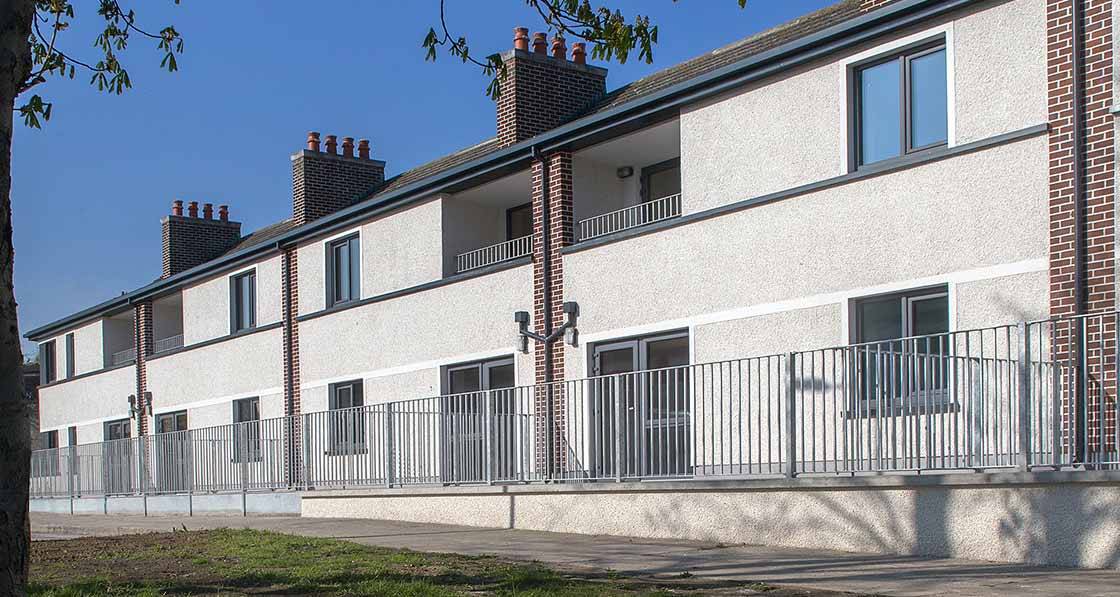
- Blogs
- Posted
Is Enerphit the key to decarbonising existing homes?
With increasing attention turning to cutting carbon emissions from existing homes to meet carbon reduction targets, Duncan Smith, housing asset and energy strategy manager at Renfrewshire County Council in Scotland, argues that approaches which improve comfort and dramatically reduce energy bills must be front and centre.
This article was originally published in issue 37 of Passive House Plus magazine. Want immediate access to all back issues and exclusive extra content? Click here to subscribe for as little as €10, or click here to receive the next issue free of charge
Over the coming weeks and months, governments here in the UK and Ireland will start to plan the phased return to normality out of lockdown. There is an opportunity that presents itself as we emerge from the pandemic and dust ourselves down. An opportunity to change the dynamic and build a better retrofit model.
Within housing we need to look at the systems and practices that we use and ask if they are value for money both now and into the future. In many parts of the UK the cost of energy to heat a home is expensive. For those living in social housing the cost can be between £1,700 and £2,200 a year. That’s almost double the gas-grid average across the UK. This simply cannot be sustainable, not just for the environment but for households too.
So, if we carry out retrofit works to a home and it doesn’t move the cost in any way that the householder is able to see the benefit, are we doing the right thing? We need to aim for a significant reduction in energy consumption, allowing the remainder to be provided by renewables.
This can only really be done through building fabric improvements and fundamentally increased airtightness levels. In some urban areas we can look at heat networks, but we still need to do all we can to improve the fabric. We can’t address climate change unless we address how much heat we need to keep our homes warm.
One way of doing this could be through adopting an Enerphit model as standard. To do this we need increased fabric improvements, higher specification glazing and airtightness levels comparable/better than current new build standards.
I believe Enerphit can be a catalyst for change and a number of social landlords have already delivered Enerphit or near Enerphit projects in the UK and Ireland over the last couple of years, including Portsmouth City Council (Wilmcote House) and Queens Cross Housing Association (Cedar Court), along with Dún Laoghaire-Rathdown County Council’s Rochestown House and Dublin City Council’s St Bricin’s Park.
In terms of costs, it is more expensive to take a home to Enerphit than a standard, or “cosmetic” retrofit approach. However, recent unpublished research in Scotland estimated that cost may be £25,000 on average if carried out at scale. But what does it save long term? What are the physical and financial benefits?
There is an opportunity to not only improve the living conditions within households across the UK and Ireland, but to address climate change and eradicate fuel poverty.
From a monetary value to the resident, it’s possible that it could reduce the costs of heating a home by 90% to under £200 on average. A typical saving on a heating bill – excluding electricity and hot water – could be £1,000 a year.
For occupants, this could have a significant impact on their lives – especially for those in social housing. Warm, dry homes will have a transformational impact on the lives of those living in them. Of course, not everything can be retrofitted to Enerphit standard and where we can’t we need to look at where low carbon heat networks can bring value.
We shouldn’t use heat networks to o%set fabric improvements, rather to compliment them. It’s not one or the other – it must be both. Together with fabric improvements and renewables there is an opportunity to not only improve the living conditions within households across the UK and Ireland, but to address climate change and eradicate fuel poverty.
But there is also an opportunity to invest in our industry, to upskill our workforce; to develop new ways of thinking about our buildings and addressing their efficiency. For all this to happen, individuals, companies, specifiers, designers, buyers, providers and most crucially end users must be convinced by the argument and become advocates of change for an Enerphit approach. An approach that reduces demand for energy to the minimum and provides the residual demand through renewables. An approach that looks beyond the cosmetic and looks at value and the long-term benefits.
Let’s not go back to business as usual. Let’s not settle for more of the same. Let’s develop a new norm, one that delivers real benefits to all households. One that builds a sustainable future across society and the economy, and that addresses climate change.
If Covid has taught us anything, it is that real and significant change is possible in a short space of time. We shouldn’t squander this opportunity to change. We shouldn’t revert to the tired old ways of doing things. They didn’t work before; they won’t work now. We should embrace the possibilities that change could bring.




